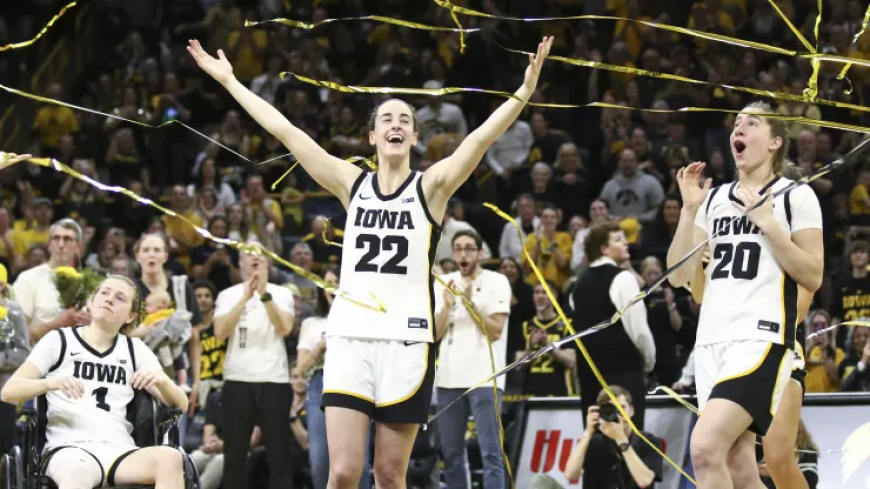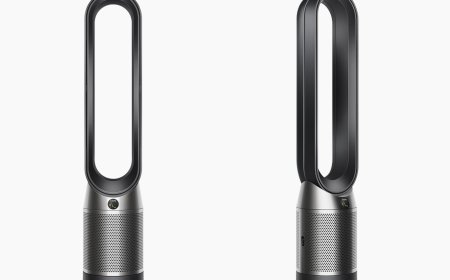Women’s sports could bring in over $1 billion in 2024—record-breaking viewership, stars like Caitlin Clark are driving growth!
Guard Caitlin Clark and guard Kate Martin of the Iowa Hawkeyes celebrate in the confetti after winning a match-up against the Ohio State Buckeyes at Carver-Hawkeye Arena on March 3, 2024 in Iowa City, Iowa.

2023 was a pivotal year for women in sports — a tipping point defined by record-breaking events like the NCAA women’s basketball tournament and the Women’s World Cup.
Women’s sports are expected to become even bigger in the year ahead. The new Professional Women’s Hockey League kicked off its inaugural season in January. At the upcoming Olympics Games, there will be an equal number of male and female athletes, a first in the history of the Games.
Deloitte forecasts that in 2024, for the first time, women’s elite sports will generate a revenue that surpasses $1 billion — a 300% increase on the industry’s evaluation in 2021.
It’s hard to pinpoint what, exactly, is driving the sudden surge in popularity of women’s sports. Some fans point to young rising stars like tennis player Coco Gauff and college basketball standout Caitlin Clark, who are attracting new viewers to their sports, while coaches and sports executives attribute the growth to new investments in women’s professional leagues and greater sponsorship opportunities.
These four standout moments in women’s sports highlight its success in the past year and could hint at its continued rise in 2024:
The most-attended women’s sporting event ever

On August 30, a college volleyball match in Nebraska smashed a world record in the stands.
Drawing over 92,000 fans, the Nebraska Cornhuskers said their match against Nebraska-Omaha saw the largest crowd to watch a women’s sports game ever.
The fans at Lincoln’s Memorial Stadium broke the previous record of 91,648 that was set in Spain in 2022 when FC Barcelona played Wolfsburg in a Champions League match.
Jordan Larson, a three-time Olympic medalist who played for the Huskers in college and re-joined the team as an assistant coach in 2023, watched the historic match online while she was traveling in Canada with the U.S. women’s volleyball team.
“Two of the other former Huskers on the team, Justine Wong-Orantes and Kelsey Robinson, and I pulled up the stream and got chills watching from where we were, so I can only imagine what it felt like in the stadium,” she tells CNBC Make It. “I think the coolest part is I had friends from all over the world texting me, asking, ‘What’s happening in Nebraska?’”
2023 turned out to be a record-breaking year for college women’s volleyball, which saw attendance at matches and television ratings skyrocket, the NCAA reports, crediting the success of the summer match with sparking greater interest in the sport.
The game wasn’t just a celebration for Nebraska, but a statement for “all women in sports,” Larson adds. “To what it has done to the world of volleyball, and now the capacity for our sport, is huge.”
The Caitlin Clark Effect

A few weeks after Nebraska’s historic game, the University of Iowa women’s basketball team, led by 22-year-old Caitlin Clark, hosted their own outdoor preseason game in its football stadium, drawing more than 55,000 fans.
It’s hardly surprising that such a large crowd turned out to see the Hawkeyes, as Clark’s dominance on the court converts more casual viewers to women’s college basketball fans.
Clark, a sharpshooting point guard with impressive range, has broken several major records across men’s and women’s college basketball — most recently on March 3, when she became the NCAA Division 1 all-time leading scorer in men’s and women’s college basketball in Iowa’s game against Ohio State.
Clark has drawn all kinds of celebrities to Iowa Hawkeye games, from actor Jason Sudeikis to rapper Travis Scott.
Her performance has also lured in millions more viewers to college women’s basketball at home: The 2023 NCAA Division 1 championship game, where the Hawkeyes lost to Louisiana State University, had nearly 10 million viewers on ABC and ESPN2, a record for an NCAA women’s basketball game.
The “Caitlin Clark effect” could soon be seen in women’s professional basketball as Clark recently announced that she is forgoing her last season of college hoops to enter the WNBA draft.
“I’m just kind of ready for the next chapter and a new challenge in my life,” Clark said in a March 7 interview with “Good Morning America” co-anchor Robin Roberts. “And what I’ve been able to do here has been very, very special.”
A championship game draws the biggest crowd in WNBA history

The momentum for women’s basketball carried into the WNBA, which had its most-watched season in 21 years.
The New York Liberty hosted the largest crowd in WNBA history — clocking in at 17,143 — at Barclays Center on October 15 for Game 3 of the Finals, where the Liberty played against the Las Vegas Aces. The Aces won, becoming the first WNBA franchise in 21 years to repeat as champions (the Aces also won the championship in 2022).
“To see all of the attendance records from this past year’s WNBA Finals was remarkable,” says Liberty Head Coach Sandy Brondello. “It is a true testament of how women’s sports can flourish when given the proper stage and spotlight such as Barclays Center.
Brondello adds that she’s looking forward to welcoming even bigger crowds in 2024 and “hopefully more broken attendance records” during the next season, which starts in May.
A historic Women’s World Cup

The 2023 FIFA Women’s World Cup saw several major records broken over the 64 matches that took place in Australia and New Zealand in July and August.
Close to two million fans watched the tournament in person, making it the most attended event in the history of the Women’s World Cup.
Dame Sarai Bareman, FIFA’s chief of women’s football, says the organization’s first global strategy to grow women’s participation in soccer, which was introduced in 2018, is a major reason last year’s tournament was so successful.
The strategy includes development programs for aspiring female athletes, as well as initiatives to introduce the sport to more fans across the globe.
“When FIFA took the bold decision to expand the tournament from 24 to 32 teams, there was nervousness from outside that the women’s game wasn’t ready, that competitive balance would be an issue,” she says. “But what we saw on the pitch in the end was incredible – it really showcased the strength of the women’s game globally.”
Deloitte cites last year’s World Cup, which generated more than $570 million in revenue, as a major turning point in the growth of women’s professional sports.
Bareman agrees. “New stars emerged, the stadiums were packed, the world was talking about women’s football,” she says. “For the next generation, young girls and boys, seeing this level of football in sold-out stadiums is normal.”
What's Your Reaction?




























































